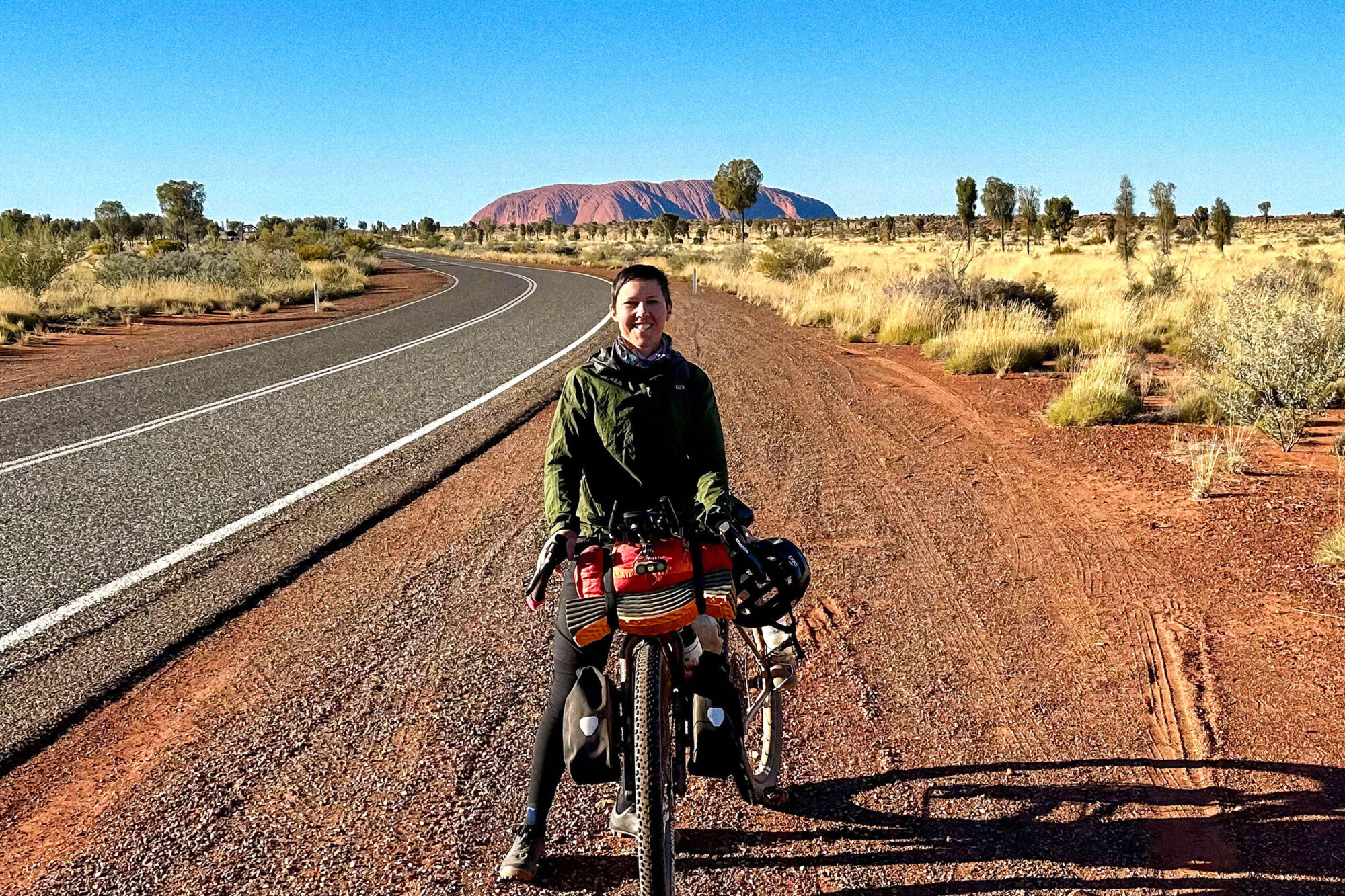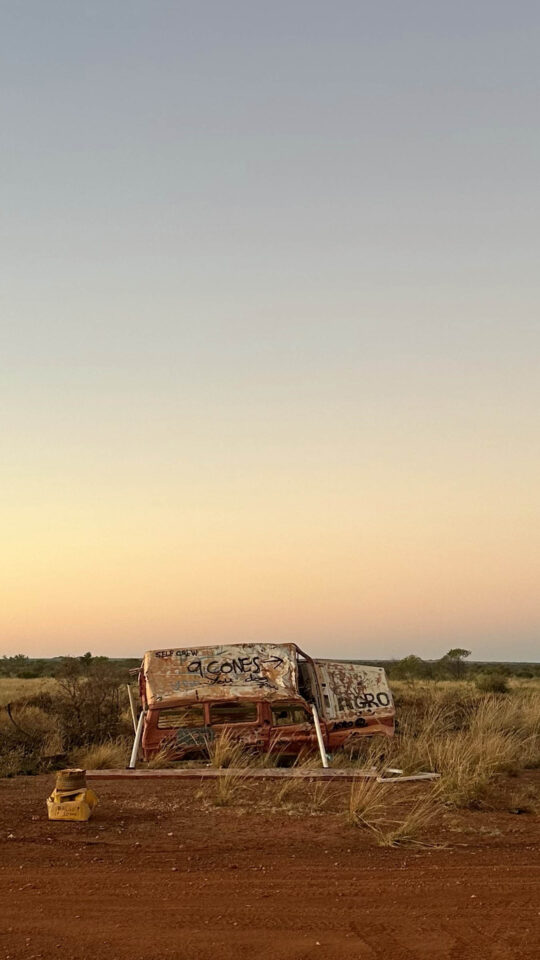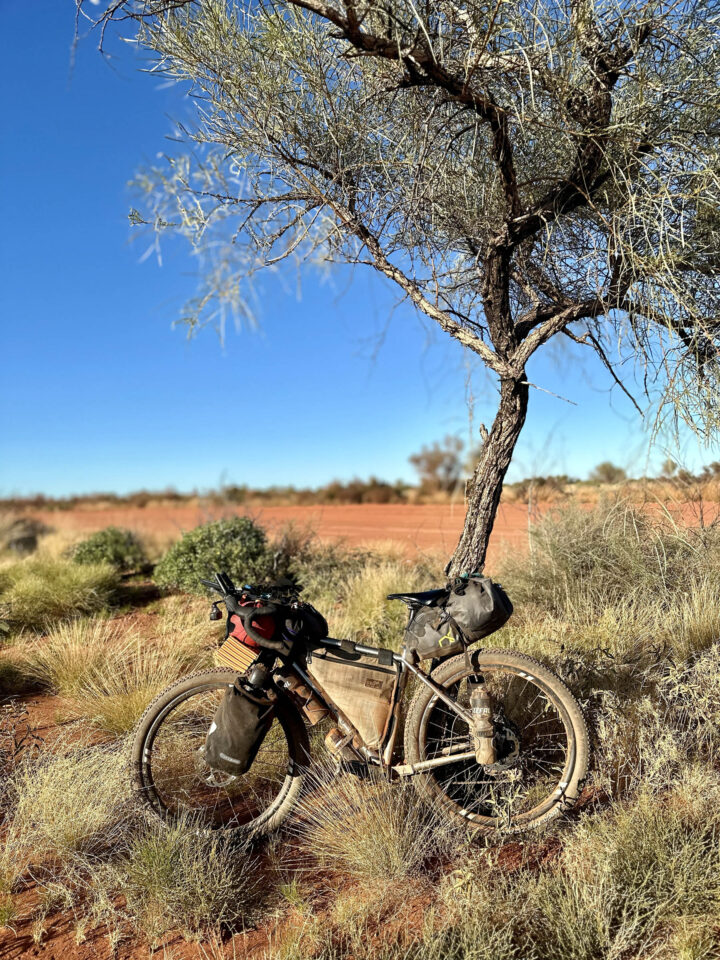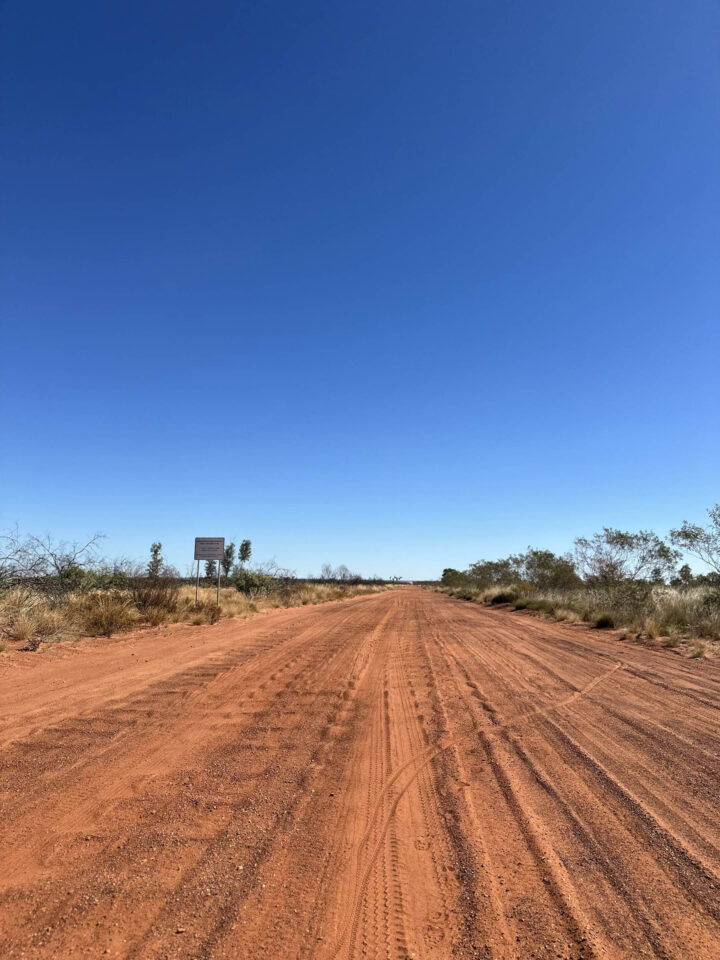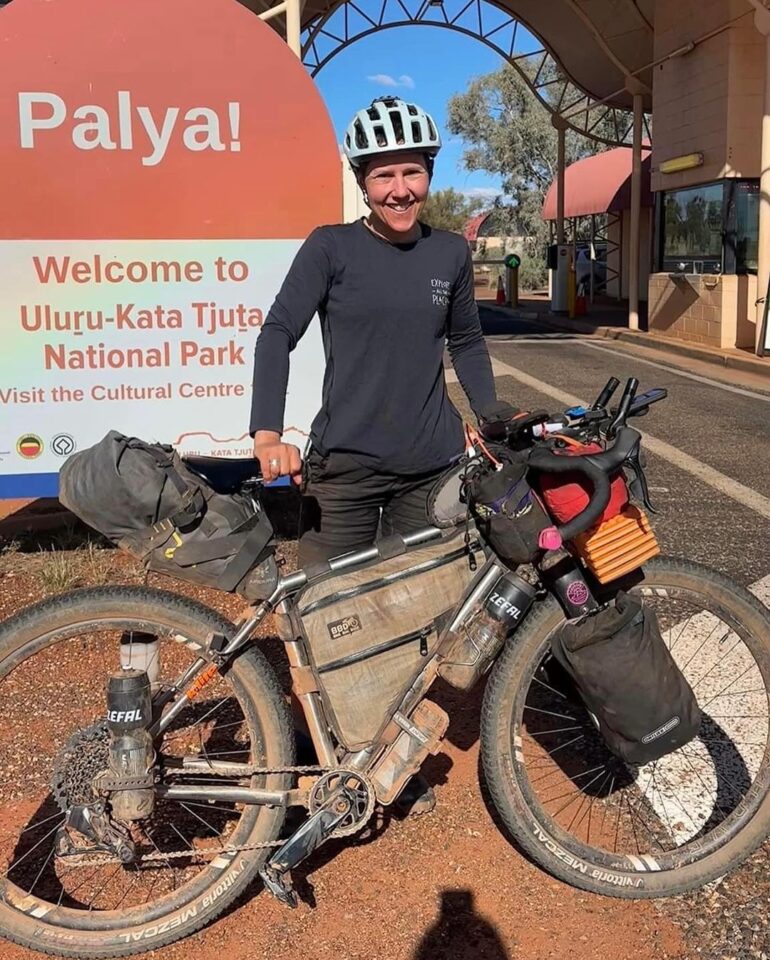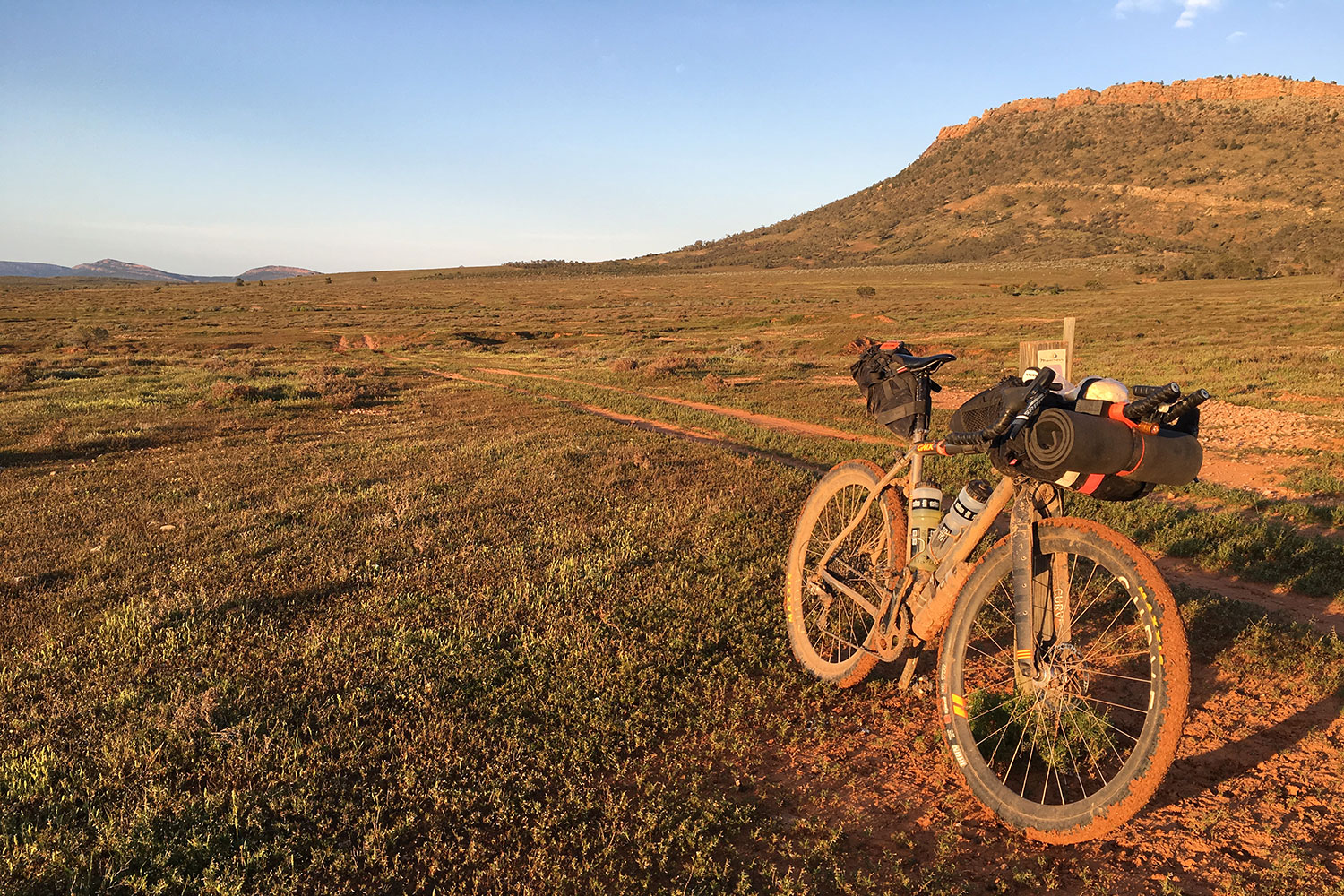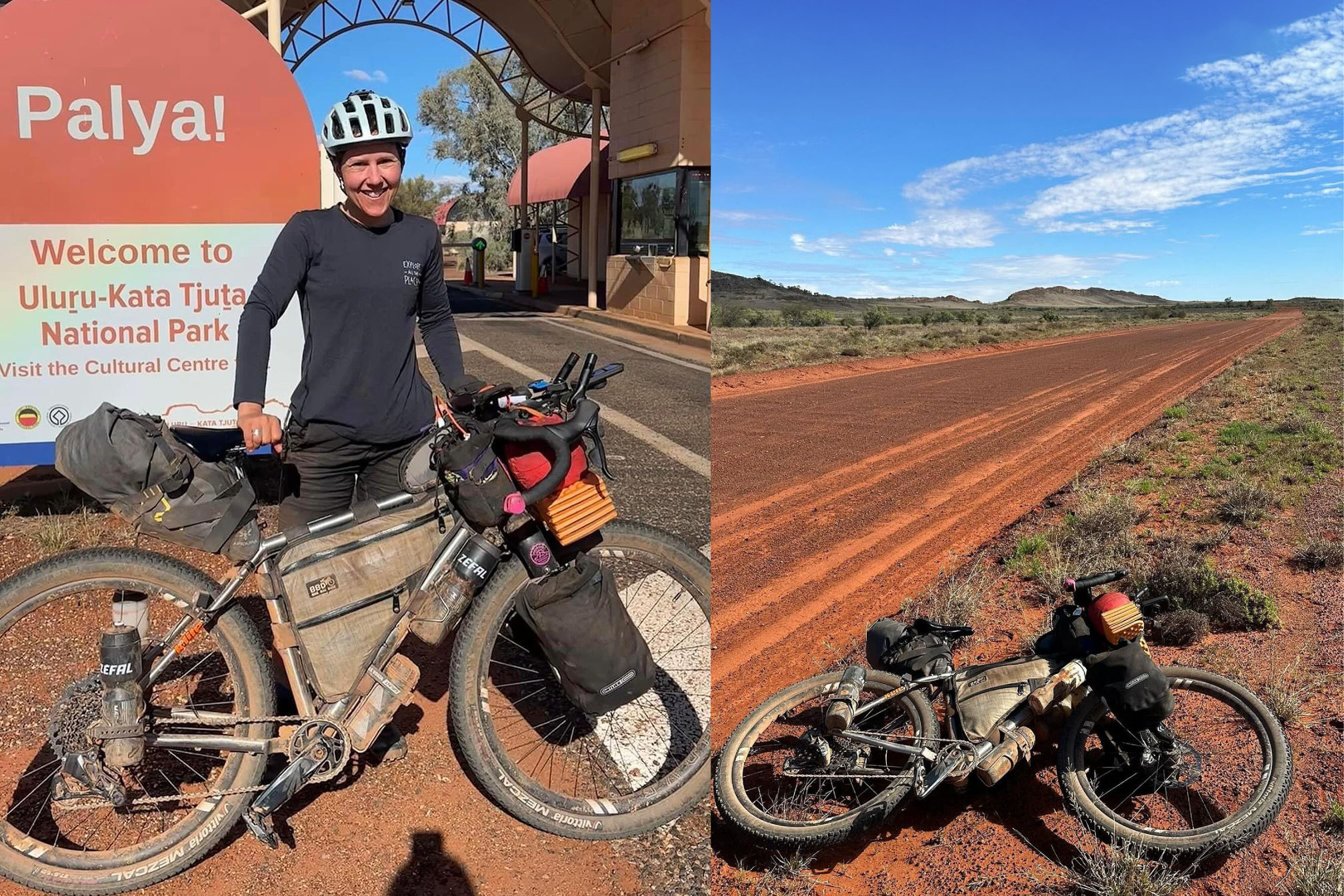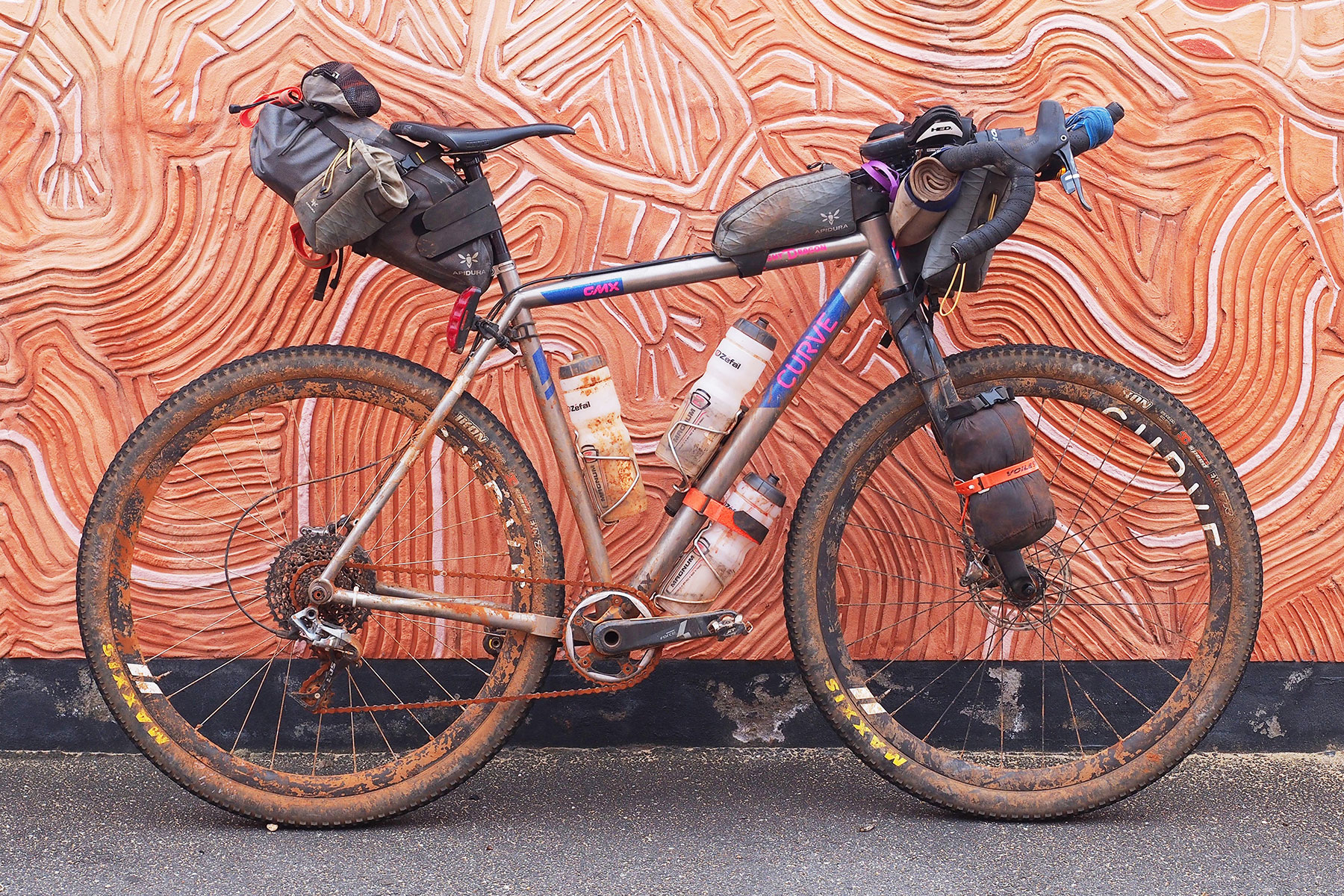Last week, April Drage became the first person to finish the 2024 Race to the Rock, a challenging ride across the Australian Outback. In this piece, April recounts her incredible 2,750-kilometer ride and the challenges that make this event the quintessential Australian bikepacking race…
Words and photos by April Drage
Race to the Rock has to be the quintessential Australian bikepacking race. It’s an event that still subscribes to the original ethos of this wild sport: there are no checkpoints, there’s no entry fee, no fanfare, or sponsors, and, of course, there is no support whatsoever. It’s simply a start date and time with a route to follow. The route changes each year, with the typical finish at the iconic Uluru (Ayer’s Rock) in central Australia. The 2024 edition was a departure from the usual format in that it started in the small town of Derby, Western Australia (instead of an Australian capital city), with the route taking in three challenging outback roads—Gibb River Road (think the ochre dirt of the Kimberley and crocodile-infested waters), the Duncan Road (a remote dirt road with a few creeks and many corrugations), and the Tanami Road (the Tanami Desert!)—before continuing the journey through sub-zero desert nights via the town of Alice Springs and beyond to Uluru.
This year’s key challenges were the distances between services (600 kilometers at a time) and the nature of the services available. Most were tiny stores in Aboriginal communities with limited opening hours. There were also potentials for extreme changes in temperature along the way (from sub-zero to over 40°C) and the likelihood that the route could be rather slow going with corrugations, sand, and rough, rocky terrain.
As I prepared my logistics sheet to get a feel for this route and how I might prepare for it, it quickly became clear that unless I was willing to accept some very long stops waiting for resupply points to open, I would need to carry up to 1,000 kilometers’ worth of calories and up to 15 litres of water at a time. A solid tool kit (there aren’t many bike shops out there in the desert!), first aid kit, water filter, a sleep system and clothing layers suitable for very cold temps and a legionnaires hat for sun safety in the heat resulted in a hefty pack. My XS Curve Cycling GMX+ can comfortably take 12L of water on the frame, plus I added Ortlieb Fork Packs and borrowed a large (17L!) Apidura seatpack from a friend and a Salomon running vest for additional carrying capacity. At times, when completely loaded up, my bike must have weighed 40 kilogrammes! It occurred to me that this must be the most remote bikepacking race in the world.
The nature of the route resulted in a small field of largely experienced riders taking on the challenge. I noticed that two-time Race to the Rock winner Erinn Klein and I had made very similar choices regarding gear selection and carrying capacity.
As the ride commenced, I ignored the crowd and rode my own rhythm. I found myself punching out 360 kilometres on day one and feeling great, with my only concern being the water crossings that I would inevitably have to tackle in the dark (when crocodiles are most active) unless I was prepared for a very long wait for the winter sunrise. As it happened, Erinn and I seemed to keep to a similar rhythm and arrived at key crossings simultaneously; two helmet lights are better than one! With a few laughs, lots of fear, and some jumping at shadows, we made it through those creepy waters without incident or croc sightings.
By the time I reached Kununurra (key resupply at the end of the Gibb River Road), my ride was going exactly as I thought it would; my timing was on point. Rolling out of Kununurra in searing heat with 15L of water and 1,000 kilometres’ worth of calories, I was daunted but gaining confidence. I had also inadvertently taken the lead in the race.
As the majority of the 2,750-kilometre course was remote), pacing myself in the heat to ensure I could continue feeling good and riding strong was vital. I generally stuck to a ride for 20 hours and stop for four hours rhythm. The route through to Alice Springs was HOT (over 40°C) and, at times, quite sandy. It seemed that Erinn Klein was managing himself by keeping to a similar rhythm. I don’t consider myself a racer, and my speed relative to anyone else never seems that relevant to me.
But, as I was now leading the race, it didn’t feel like the sporting thing to do, to throw it, to make it unnecessarily easy for Erinn to pass. So, I decided to just ride like I usually ride (keep it fun, stop to talk to any noteworthy animals, take photos, and have some karaoke along the way) but try to be a little more efficient with my stops. I decided that if I could still have a good time (not bury myself in the goal to beat Erinn), I would be up for a bit of racing. This evidently made for some good dot-watching.
After days of Erinn following close behind me through the desert, we crossed paths at a tiny store in Tillmouth Wells (2,072 kilometres into the race). Erinn arrived as I was leaving; I was hauling another 700 kilometres’ worth of calories. Erinn and I had not seen each other for about 1,300 kilometres. Neither of us had showered at all; we had ridden through extreme heat and been covered in sunblock, plus layers of dust, grit, and sand. I had been shocked by my reflection in the mirror at Tillmouth Wells, and when I saw Erinn, I had been shocked again. It had only been a matter of days since I had seen him last, but he, too, looked as though he had aged a good 15 years by what the Outback had thrown at us. We hugged, laughed, and suggested that he pass me soon, please, so that I could go and take a shower. I offered to finish the ride together, and he laughed. Erinn is a racer, and I knew he would pursue me down to the wire and love every minute of the chase.
The challenge beyond Tillmouth Wells shifted from extreme heat to the cold desert nights, with the temperature ultimately dropping to a nippy -4°C during the night. The flies came out in force during the day, but the clear brightness and mild temperatures made up for it. The section between Alice Springs and Uluru via Maryvale Road and Ernest Giles Road proved to be unexpected highlights. With some fatigue setting in, I took more naps in the last couple of days, 30 minutes here and there, lying in the dirt with my feet on the bike. I assumed Erinn would roll by, but he didn’t. At last, I hit the bitumen, a tailwind gave me a lift, and by Curtin Springs (with some 87 kilometres remaining), I was confident that Erinn would be unable to make up the ground by the end. That said, short of stopping to shed the overnight layers and grab some water and ice cream, I wasn’t going to test the theory.
I ultimately rolled to the finish line mid-afternoon 9 days, 7 hours, 13 minutes, and 2 seconds after I started, incidentally as the first rider overall and as the first and only woman in this race. Erinn arrived a couple of hours later, and we rolled on to the comfort of hotel rooms and showers, energised by the together-but-alone adventure that led us there and the memories made that we will carry with us for the rest of our days.
For more on the bike April was riding, find our review of the Curve GMX+ here and the product page here.
Further Reading
Make sure to dig into these related articles for more info...
Please keep the conversation civil, constructive, and inclusive, or your comment will be removed.






